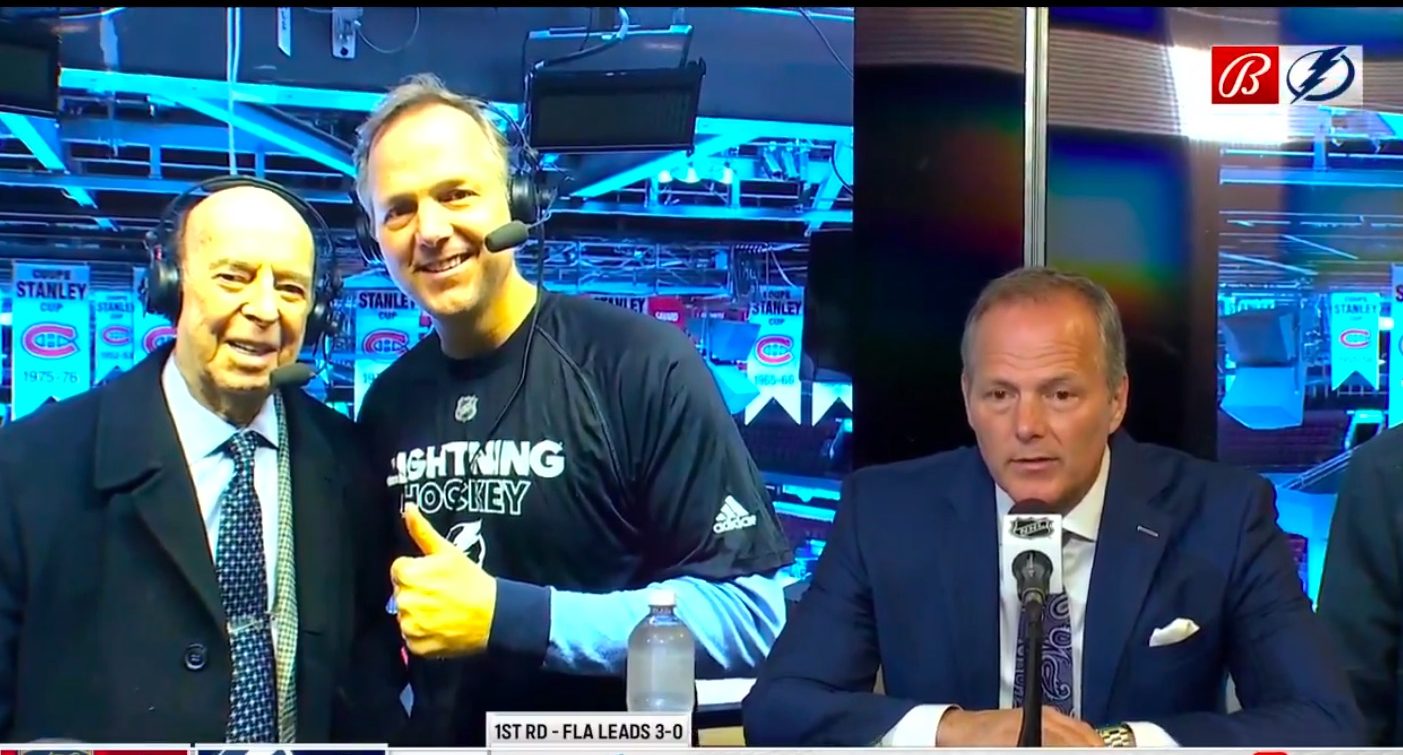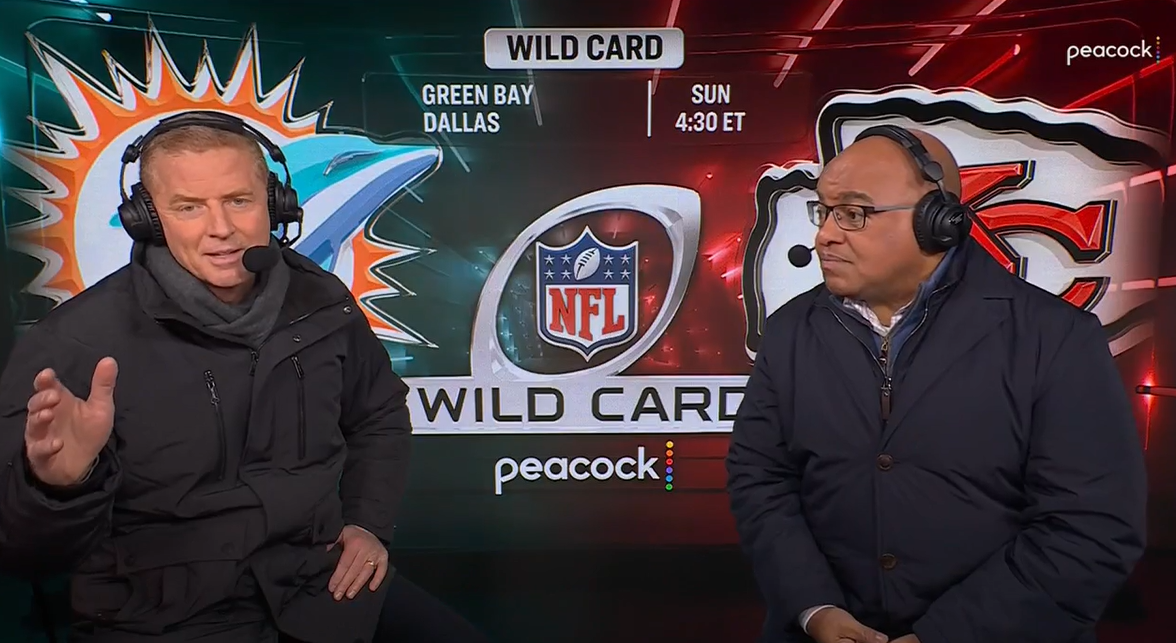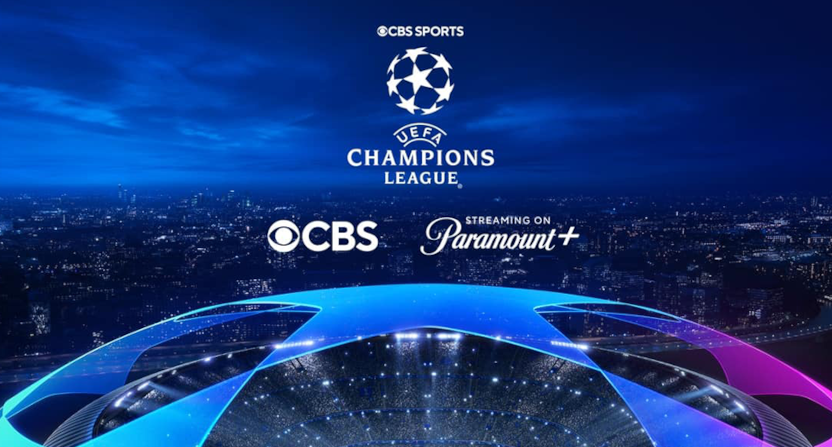Welcome to another edition of This Week In Hot Takes, breaking down all the hottest takes from the sports media world from Feb. 9-15. This time around, we have a special Winter Olympics edition, because so, so many people have takes on what should and shouldn’t be an Olympic sport.
5. U.S. senator John Cornyn calls curling “the most obscure Olympic sport”: Normally, we limit this column to people in sports media rather than politicians, but the veteran senator from Texas weighing in on curling was too spicy to pass up.
Curling has to be the most obscure olympic sport. What is the point?
— Senator John Cornyn (@JohnCornyn) February 12, 2018
The best part of this was that, as Toronto Star Washington correspondent Daniel Dale noted, Cornyn’s Twitter feed is otherwise almost exclusively politics and news stories:
What's great about this tweet is that it's completely out of character with the rest of his Twitter posts. He just couldn't deal with curling and had to tell everyone. https://t.co/T5VrMoAs5Z
— Daniel Dale (@ddale8) February 12, 2018
Rating: ??
4. Justin Peters bashes skeleton: Several publications decided to run pieces ranking Winter Olympic sports, and those unsurprisingly included some fiery takes on the lower-ranked sports. First, we go to Justin Peters for his Slate piece. Peters actually ranks Nordic combined (ski jumping and cross-country skiing) the lowest, but his take on it isn’t all that inflammatory. When he gets to skeleton (ranked 14th), though, look out:
Skeleton is the least essential sliding sport, and sliding sports are the worst Winter Olympic sports, which makes skeleton the least of the worst. While it sounds great in the abstract—shooting head-first down ice tracks on flimsy skate-sleds! reaching very high speeds at great personal risk!—skeleton is not particularly beautiful and, while exciting in the short term, is not something you’d ever want to watch for hours at a time. It’s only been a permanent part of the Olympic programme since 2002, so it’s not as if there’s any historical reason to revere or retain it, though I do like to imagine Baron de Coubertin being forced into a garishly airbrushed helmet and being sent down the track as the arena rings with his cries of puzzlement: “But how does this bring lasting peace to Euroooooooooooope????”
Well, Justin, I’m sorry that competitors defying death by sliding head-first down an icy track at incredible speeds isn’t “beautiful” enough for you. Clearly you should have been consulted.
Rating: ???
3. MJ Franklin calls cross-country skiing “commuting”: Speaking of these hot ranking takes, Mashable’s MJ Franklin did the same thing, but decided that cross-country skiing was the sport to pick on:
It is a truth universally acknowledged that cross country skiing is the worst. I won’t go as far as to say cross country skiing shouldn’t even be a sport — it is hard to put two rigid boards on your feet and then use two tiny little poles to push your body over large swathes of land — but for a brief moment, I considered it.
Because let’s be clear: what we call “cross-country skiing” is actually just “commuting,” for a lot of people. Sure, it’s hard commuting. But I take the New York City subway to work every day and you don’t see me calling that perpetually delayed nightmare an Olympic sport.
Yes, I’m sure countless people train year-round and ingest up to 7,000 calories a day (more than any other Winter Olympic athletes) before “commuting” up to 50 kilometers on skis. That totally compares to you hopping on the subway.
Rating: ????
2. Ross Tucker questions the invention of biathlon: Tucker, the former NFL player turned media figure (he’s had past stints at Sports Illustrated and Sports on Earth, and currently does some work for NBCSN, Westwood One and Sirius XM), dropped in a hot take on biathlon:
Kudos to the dude that invented skiing and then shooting guns as a sport. Clearly a critical life skill.
— Ross Tucker (@RossTuckerNFL) February 10, 2018
Well, repeatedly bashing heads with opposing linemen isn’t necessary a critical life skill either, Ross. And biathlon actually might be the closest to “critical life skill” of Winter Olympic sports, given its history. Biathlon’s history dates back to the 1800s, where Norwegian military regiments organized skiing and shooting competitions in various categories, and one of the first Norwegian ski clubs was formed in “to promote national defense at the local level.” Biathlon’s Olympic history actually began as “military patrol,” which made its first appearance in the 1924 Olympic Games in Chamonix, France. As Ian McCollum detailed in a 2014 feature at The Firearm Blog, that first version of the sport was very much a military exercise:
Military Patrol followed the same basic outline as today’s biathlon, although it was more grueling and was a team event. A four-man team was composed of a leader (typically an officer) and three subordinates (typically two privates and an NCO). The three men carried service rifles and did the shooting, while the officer led the team, carried a pistol, and did not do any shooting (he could carry another team member’s rifle on the course, but not at any of the shooting stations or at the start or finish lines). The course was 30 kilometers long (18.6 miles), and include 500-1200m of elevation gain (I can’t find the exact number for 1924, but the 1928 course included 1100m of elevation gain). Oh, and the three men had to carry weighted backpacks (either 24kg each or 24kg combined; sources conflict on this point). Partway through the ski course there was a single shooting station, with 18 targets at 250m. Each of the three riflemen would have six shots to make as many hits as possible, and each hit would confer a 30 second bonus to the team’s time.
In the 1924 Olympics, the gold medal was taken by the Swiss team, with a raw time of 4 hours and 6 seconds, and 8 targets hit for a 4 minute bonus. The Finnish team took 4 hours, 5 minutes and 40 seconds to complete the course but had the best marksmanship, with 11 targets hit. The bonus times from those hits put them a mere 4 minutes behind for the silver medal. Third went to France (with a disappointing 2 targets hit) and fourth to Czechoslovakia. The other two teams competing, from Italy and Poland, both failed to complete the course (a sure sign of a thoroughly challenging competition).
Military patrol showed up three more times as an Olympic demonstration sport (1928, 1936 and 1948) with some rule tweaks in later years that brought it closer to today’s biathlon, and biathlon entered the Olympics in 1960 (helped by the Soviet Union and Sweden both emphasizing the sport). Oh, and there’s an incredible history of actual military engagements involving skiing, from the Norwegian ski troops that fought in the early 19th century Napoleonic wars to the creation of the Italian Alpini battalions in 1872 and their three-year campaign in the Alps in World War I, to the 1939-1940 Winter War between Finland and the Soviet Union and the 1942 Norwegian commando raid of Operation Gunnerside (dramatized by Hollywood as Operation Telemark). Today’s biathlon has much more of a civilian focus, but skiing and shooting guns has been a “critical life skill” for many people for a long time. Much more so than any sport Tucker played.
Rating: ??? ?
1. Steve Simmons calls mixed curling “an Olympic sham”: The spiciest take of all this week comes from Canada’s Steve Simmons, a columnist for Postmedia who brought something hotter than the imaginary hot dogs he had Phil Kessel consuming daily. This time around, he’s yelling about mixed doubles curling and team figure skating, in a piece titled “Mixed doubles curling is an Olympic sham — and not all gold medals are created equal“:
Excuse me if I’m not among the thousands — millions, maybe — celebrating the great gold-medal victory by Canada’s mixed doubles team.
Mixed doubles, invented in form for these Winter Games, does not belong on the big stage. You know that for this very reason: Most Olympic athletes train their entire lives just to qualify for the Games, let alone wind up on any podium. Yet John Morris and Kaitlyn Lawes stood on a podium with gold medals around their neck having practised once for half an hour in Winnipeg, before dominating the field here.
…But mixed doubles? This is a made-up Olympic event, added basically because curling draws television numbers and this gives TV another sport that fills plenty of hours for broadcasters around the world.
And mixed doubles is not alone in its place as an Olympic sport that should be edited out of this already-bloated event. Canada has a gold medal in team figure skating. Do you know anyone who grew up wanting to be a team figure skater? Anyone?
Figure skating has been an Olympic sport for 110 years. It is a fabulous, heart-breaking, dramatic event that has produced some of the greatest moments in Olympic history. The battle of the Brians. The drama surrounding Tonya Harding and Nancy Kerrigan. The excellence of Katarina Witt.
You know what they all have in common?
Not one of them owns an Olympic medal for team figure skating, which has been in the past two Games. And for 100 years nobody thought there was any reason to include it in the program.
It’s a made-for-TV nonsense sport, proving next to nothing.
Patrick Chan now has a figure skating gold medal because he was part of Canada’s gold medal-winning team. He will openly admit he didn’t skate anywhere close to form. He now has three Olympic medals, one silver from singles competition, as well as a silver and a gold from the team competition.
Chan told people after the team victory that his gold-medal win made up for the disappointments from previous Games. That is hokum.
So, Simmons’ argument is that these events shouldn’t exist because they’re more recent than the traditional four-man curling teams and individual or pairs figure skating competitions. Sorry, Steve, but that’s what’s hokum here. First off, all of these athletes have been competing at high levels for extremely long periods (both Morris and Lawes previously won Olympic gold in regular curling, in 2010 and 2014 respectively, and Chan won silver in singles figure skating in 2014), so they didn’t just wake up and get a medal.
Beyond that, there’s totally a place for different kinds of competitions and team events. Consider Simmons himself talking about the Canadian men’s 4X100 relay team in the 2012 London Olympics, which he started with “The greatest night of their sprinting lives.” Was that hokum too, Steve, because it wasn’t those men competing individually? And as for mixed-doubles curling, it’s a form of the sport that’s both notably different (fewer ends, fewer rocks in each end, sweeping your own rocks) and one that’s gaining a lot of prominence and popularity. The much better take on it came from Simmons’ Postmedia colleague Ted Wyman in a response titled “Mixed doubles curling is far from a sham: It could actually revolutionize the sport“:
The debut of mixed doubles introduced a large part of the world to a much faster, shorter, higher-scoring, more athletic version of curling.
Look away at your own peril — mixed doubles is not the sometimes plodding, three-hour long, methodical chess match of a game that is traditional curling. Mixed doubles has action and games can change in a heartbeat.
How would the traditional games seem by comparison? Well, to be blunt, they seem much slower, longer and more methodical, as expected. This is nothing against the traditional game. I have been a fan of the strategy, shot-making and under-appreciated athleticism for decades, but it can always be better.
I say this to draw attention to the fact that mixed doubles curling could help revolutionize the entire sport. How long will it be before traditional curling adopts some of the rules that make mixed doubles more exciting — things like eight-end games, no hitting the first four or five rocks of an end and giving up the hammer on blank ends.
Guaranteed, those changes would increase scoring and excitement in traditional curling. Don’t be surprised to see it happen before the next Olympic Winter Games in Beijing in 2022.
And don’t be surprised to see mixed doubles explode over the next quadrennial, especially in Canada after Kaitlyn Lawes and John Morris won the first-ever Olympic gold medal in the discipline on Tuesday night.
Of course, it’s not clear that traditional curling will follow with some of these changes, or even that it should. It has its own appeal, and plenty of traditionalists will argue that it should stay exactly as it is. But mixed doubles carries its own merits and its own particular set of skills, and it’s far from the “sham” Simmons unilaterally declared it to be. But don’t worry, Steve; as soon as there’s an Olympic event for terrible stories about athletes’ eating habits, you’re a lock for gold.
Rating: ?????
Notable absences: Stephen A. Smith, Skip Bayless, Phil Mushnick. (All keeping a three-week streak going, although Bayless might have made it for this LeBron take if not for the Olympic theme this week.)
Hot Take Standings:
Stephen A. Smith – 177
Skip Bayless – 136
Phil Mushnick – 112
Colin Cowherd – 46
Shannon Sharpe – 35
Rob Parker – 29
Doug Gottlieb – 22
Charles Barkley – 19
JT The Brick – 17
Albert Breer – 16
Don Cherry – 15
Ray Lewis – 14
Bill Plaschke – 14
Rick Morrissey – 13
Bob Brookover – 10
Jeremy Roenick – 10
Berry Tramel – 10
Kristine Leahy – 10
Chris Broussard – 10
Ross Tucker – 9
Keith Olbermann – 9
Dan Dakich – 9
Ryen Russillo – 9
Garth Crooks – 9
C.J. Nitkowski – 9
Frank Isola – 8
Michael Rapaport – 8
Tony Massarotti – 8
Jason McIntyre – 8
Bart Hubbuch – 8
Pat Forde – 7
Danny Kanell – 7
Dan Shaughnessy – 6
Pat Leonard – 6
Mike Francesa – 6
Michael DeCourcy – 6
Luke Kerr-Dineen – 6
Terry Bradshaw – 6
Greg A. Bedard – 6
Steve Simmons – 5
John Moody – 5
Marni Soupcoff – 5
Ryan Rishaug – 5
Kurtis Larson – 5
Rod Watson – 5
Dan Wolken – 5
Britt McHenry – 5
Chuck Modiano – 5
Joel Klatt – 5
Steve Buffery – 5
Joe Morgan – 5
Michael Felger – 5
Howard Eskin – 5
Nancy Armour – 5
Richard Justice – 5
John Middlekauff – 5
Ameer Hasan Loggins – 5
Jesse Watters – 5
John McGrath – 5
Mike Sielski – 5
Gordon Monson – 5
Scott Fowler – 5
Mike Bianchi – 5
Terry Frei – 5
David Jones – 5
Sabrina Parr – 5
Abbey Mastracco – 5
Terry Cushman – 5
Rob Rossi – 5
Rick Bozich – 5
Michael O’Doherty – 5
Simon Briggs – 5
Dan Wetzel – 5
Mike Parry – 5
Bob Ryan – 5
Robert Reed – 5
Pete Dougherty – 5
Dan Le Batard – 5
Marcus Hayes – 5
Kyle Turley – 5
Mike Ditka – 5
Erril Laborde – 5
Lowell Cohn – 5
Rosie DiManno – 5
MJ Franklin – 4
Alex Reimer – 4
Joan Vennochi – 4
Graham Couch – 4
Matt Yglesias – 4
Andy Benoit – 4
Bill Livingston – 4
Michael Irvin – 4
Shawn Windsor – 4
Brock Huard – 4
Byron Tau – 4
Maggie Gray – 4
Michael Powell – 4
Mark Spector – 4
Chad Forbes – 4
Gary Myers – 4
Mark Schlereth – 4
Andy Gray – 4
David Fleming – 4
The Sporting News – 4
Jeff Pearlman – 4
Tony Grossi – 4
FanSided – 4
Cris Carter – 4
Kirk Herbstreit – 4
Tony Kornheiser – 4
Mike Felger – 4
USA Today op-eds – 4
Nathan Ruiz – 4
Justin Peters – 3
Elise Finch – 3
Kevin Skiver – 3
David Bahnsen – 3
Harold Reynolds – 3
Kevin Reynolds – 3
Mike Sheahan – 3
Bob Ford – 3
Steve Greenberg – 3
Matt Burke – 3
Malcolm Gladwell – 3
Mike Milbury – 3
Mac Engel – 3
Nick Kypreos – 3
Jason Smith – 3
Caron Butler – 3
Don Brennan – 3
Robert Tychkowski – 3
Mike Johnston – 3
Jeff Mans – 3
Joe Browne – 3
Mike Harrington – 3
Greg Mitchell – 3
John Cornyn – 2
Tony Dungy – 2
Bruce Jenkins – 2
Chris Wesseling – 2
Seth Greenberg – 2
Doug Smith – 2
Newsweek – 2
Teddy Cutler – 2
Will Cain – 2
Bill Cowher – 2
Paul Finebaum – 2
Charley Casserly – 2
Amin Elhassan – 2
Jim Henneman – 2
Mitch Lawrence – 2
Nick Wright – 2
Domonique Foxworth – 2
Gary Parrish – 2
Michael Farber – 2
Andy Furman – 2
Donovan McNabb – 2
Seth Davis – 2
Jon Heyman – 2
Jason La Canfora – 2
Booger McFarland – 2
Joe Schad – 2
Cork Gaines – 2
Thanks for reading! Tune in next week for more This Week In Hot Takes. As always, you can send submissions to me via e-mail or on Twitter.






